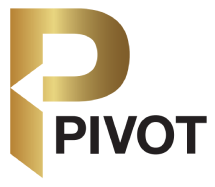One of the goals of one-on-one tutoring is to make students active participants in their own learning, by helping them become strategic learners.
According to Weinstein’s Model of Strategic Learning, there are three major components to strategic learning that are under a student's control: skill, will and self-regulation. Let’s look at each of these in greater detail.
1. SKILL-- This step refers to the strategies students need in order to learn information effectively, efficiently, and actively. Active learning allows students to build bridges between what they already know and the material they are trying to learn, and active processing helps students generate new knowledge and relate to it personally, making memorizing and recall stronger.
Some examples of these strategies:
-
Rehearsal Strategies (Lowest Level)- Surface level strategies for simple memorization.
-
Types: a mnemonic to help a student remember part of the periodic table, a rhyme to remember a math formula or anatomy vocabulary, a song to memorize the endings of conjugations.
-
-
Elaboration strategies- Elaboration helps students understand, learn and remember new information so it becomes part of their knowledge base. Elaboration learning builds meaningful relationships between new material and what a student already knows:
-
Types: paraphrasing and summarizing, using and applying the new information/concept/principle, taking a perspective, generating and answering questions about the new material, teaching the material to someone else.
-
These advanced forms of elaboration strategies require a greater amount of active processing but result in more meaningful and long-term learning than rehearsal strategies do.
-
-
Organization Strategies (Highest Level)- The act of organizing information allows students to actively take apart information to analyze trends/patterns/relationships within the new material.
-
Types: organize information into outlines, categories, hierarchies, venn or tree-diagrams or other visual forms.
-
These skills are extremely useful tools in your learning toolkit, but they don’t magically equal a fast track way to strategic learning. For that, we’ll need to work in steps 2 and 3.
2. WILL-- Will refers to a student’s motivation, goals, beliefs, attitudes, and emotions about learning. Many students know various study strategies, but do not use them because they are not motivated to use them, or do not believe the strategies themselves will work. Adults of all ages are guilty of this too! The trick is to either find the motivation to make it so that the end result is worth all your hard work or to find a way to turn work into play and, therefore, something fun (This is referred to as the Sawyer Effect, alluding to Tom Sawyer convincing a friend that painting fences is the most fun thing, so that he won’t have to do it himself).
3, SELF-REGULATION-- Self-regulation combines the first two steps into the management of skill and will. On a large scale, this might mean using time management for your academic tasks over a school term. On a day to day level, we can monitor our learning progress to make sure our time is being used effectively rather than waffling about on busy work.
Other important elements include managing stress by learning to cope with worry and anxiety and creating useful goals for short-term and long-term academic tasks.
Strategic learners are capable of taking on more responsibility in their education because they are aware of the skills, motivation, and self-regulation needed to manage their learning. Being strategic not only helps students in making achievements in all types of higher education, but it also helps them with life-long learning in school and work.
